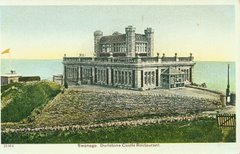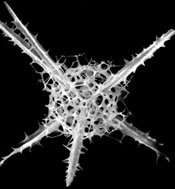 May 9th/10th 2007
May 9th/10th 2007Sam Bjorn and I spend the afternoon in discussion. Using the text books as a starting point we consider the graphs and the chapters on functional morphology, as these are the aspects that grab my attention.
We discuss, among other things, a theory that mass extinctions follow a regular pattern which could correspond with cosmic rays penetrating the earth's fragile ozone shield. Suddenly the scale we are working with appears even more immense; the whole solar system / rays / asteroids are included.
I move into the studio, finally. It doesn't look so much like the image at the top of this page any more. Much darker and encroached on by trees. The studio is a big rather gloomy rectangular space - the proportions aren't great. The castle as a whole is very ill-designed. I am glad to notice horsetails growing through the paving slabs of the courtyard outside, amid piles of rubbish being stripped out from the stricken castle. Horsetails are fantastically ancient, like ginko trees, and similarly fascinating in their form. There's something very simple about these prehistoric survivors which is really attractive.
The semi-derelict castle is being stripped out - I scavenge for potential materials and find strips of white plastic paneling, heavy chunks of wood studded with ancient nails, formica kitchen tops. It's a start. Hamish, the head ranger here takes me through the rooms of the castle pointing out all the skip-bound stuff. This includes a storage rack stuffed with a miscellany of household paint in improbable colours and a set of wicker lampshades. What will be useful and what won't be isn't clear yet. I make a list.
The group of local volunteers (The photo is from this first group meeting - Phil, Lisa, Dave, Richard, and Davina) are very enthusiastic. They have all nominated specific points in the landscape for further study. This is very reassuring as it pins the ideas down a bit and grounds them in observable, normal features of the landscape. Sam calls this 'truth-grounding'. In the photo you can see one of these nominated features. It's a syncline at Peveril Point in Swanage.
I think about Darwin. He just began with some local observable phenomena and thought intelligently about them. This simple approach brought about a paradigm shift. Fantasticaly straightforward really.


No comments:
Post a Comment